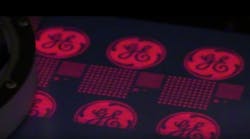The US Department of Energy (DOE) has published the final report from a demonstration of LED residential street lighting in Portland, Oregon. This Gateway demonstration report provides an overview of project results including lighting performance, economic performance, and potential energy savings. The report is available for download from the DOE website. In this project, eight 100-watt (nominal) high-pressure sodium (HPS) cobra-head fixtures were replaced with LED street light luminaires. Key findings include:
- Estimated payback was approximately 7.6 years for new installations and 20 years for replacement scenarios.
- While measured energy savings were significant at 55%, they were primarily achieved through reducing average illuminance levels by 53%. Illumination now more closely meets the level specified by the city for residential streets.
- Ten of 11 respondents in the resident survey either noticed no difference or thought the lighting quality was improved following the LED substitution.




